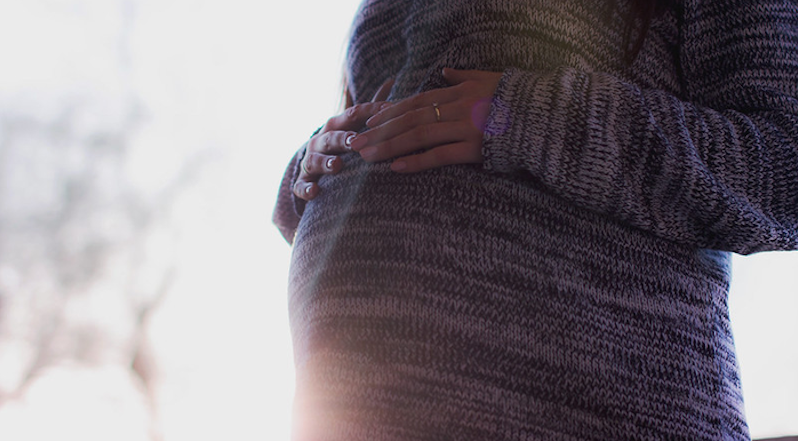Where you live can affect your ability to get pregnant, research finds
People who live in socioeconomically deprived neighborhoods are about 20% less likely to conceive in any given menstrual cycle

[Aug 3, 2022: Molly Rosbach, Oregon State University]
(Credit: Creative Commons)
People who live in socioeconomically deprived neighborhoods are about 20% less likely to conceive in any given menstrual cycle compared with people living in neighborhoods with more resources, a recent Oregon State University study found.
The study measured “fecundability,” which is the monthly probability of getting pregnant, among couples attempting conception without the use of fertility treatments.
Researchers compared neighborhoods based on their “area deprivation index” score, a measure of the socioeconomic resources in a neighborhood. They found that even among a relatively affluent, highly educated study population, people living in more deprived neighborhoods had lower fecundability rates than people living in higher-opportunity neighborhoods.
“The world of fertility research is beginning to examine factors associated with the built environment. There are dozens of studies looking at how your neighborhood environment is associated with adverse birth outcomes, but the pre-conception period is heavily under-studied from a structural standpoint,” said lead author Mary Willis, a postdoctoral scholar in OSU’s College of Public Health and Human Sciences. “Turns out, before you’re even conceived, there may be things affecting your health.”
Public health research in the last decade has highlighted the importance of social determinants of health and the idea that ZIP code is the greatest predictor for overall life expectancy, based on factors like income, health care access, employment rates, education level and access to safe water.
Related Stories
“But the concept that your neighborhood affects your fertility hasn’t been studied in depth,” Willis said. “In addition, the world of infertility research is largely focused on individual factors, so when I came into this study as an environmental epidemiologist, I was thinking we should look at it as a structural problem.”
The study leveraged data from an ongoing study by Boston University, the Pregnancy Study Online (PRESTO). Researchers analyzed a cohort of 6,356 individuals ranging from 21 to 45 years old, attempting to conceive without the use of fertility treatment, in data compiled from 2013 through 2019.
Study participants filled out online surveys every eight weeks for up to 12 months, answering questions about menstrual cycle characteristics and pregnancy status. In the study time period, 3,725 pregnancies were documented.
Researchers compared participants across different area deprivation index rankings at both the national and within-state levels, which used socioeconomic indicators including educational attainment, housing, employment and poverty.
They found that participants in the most-deprived neighborhoods based on the national rankings had a 19-21% reduction in fecundability compared with those in the least-deprived neighborhoods. Based on within-state rankings, the most-deprived neighborhoods saw a 23-25% reduction in fecundability compared with the least-deprived areas.
The majority of people in the cohort were white, had completed a four-year college education and earned more than $50,000 a year.
“The fact that we’re seeing the same results on the national and state level really shows that neighborhood deprivation can influence reproductive health, including fertility,” Willis said.
Approaching fertility research from a structural standpoint might help reduce or prevent infertility overall, she said, especially because fertility treatments are costly and usually only accessible to families with significant resources.
The study concludes that investments in deprived neighborhoods to address socioeconomic disparities may yield positive benefits for fertility.
Co-authors were Olivia Orta of the John Jay College of Criminal Justice; Collette Ncube, Amelia Wesselink, Renee Boynton-Jarrett, Elizabeth Hatch and Lauren Wise of Boston University; Lan Đoàn of New York University; and Kipruto Kirwa of Tufts University.
For more science stories check out our New Discoveries section at The Brighter Side of News.
Note: Materials provided above by Oregon State University. Content may be edited for style and length.
Like these kind of feel good stories? Get the Brighter Side of News' newsletter.
Joshua Shavit
Science & Technology Writer | AI and Robotics Reporter
Joshua Shavit is a Los Angeles-based science and technology writer with a passion for exploring the breakthroughs shaping the future. As a contributor to The Brighter Side of News, he focuses on positive and transformative advancements in AI, technology, physics, engineering, robotics and space science. Joshua is currently working towards a Bachelor of Science in Business Administration at the University of California, Berkeley. He combines his academic background with a talent for storytelling, making complex scientific discoveries engaging and accessible. His work highlights the innovators behind the ideas, bringing readers closer to the people driving progress.



